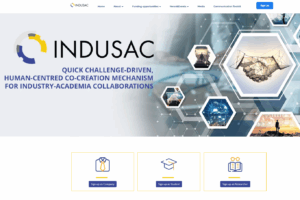
Ultra-low consumption radio receivers
February 1, 2020
A robotic wheelchair helps to improve the physical condition of people with duchenne muscular dystrophy
February 1, 2020The Optical Communications Group (GCO) at the UPC leads the ALLIANCE B project to design an optimised optical network infrastructure for rolling out 5G applications. It must be capable of interconnecting anything (for example, people, things, processes and contents) in any place, through a set of network services that really meet communication requirements (in terms of bandwidth, latency, reliability, etc.).

These network services must be orchestrated end-to-end over several segments or sections of the network and computational resources (IT) with varying characteristics. The aim is to ensure high scalability and reactivity in the face of unexpected traffic and resource state changes in an energy-efficient way.
In ALLIANCE B, new transmission techniques have been researched based on advanced modulation formats to optimise spectral efficiency and energy consumption throughout the optical network. This creates a high capacity, flexible optical network that can support the establishment of 5G services. In addition, optical network infrastructures that are spectrally flexible (in signal commutation) are being investigated, with ultra-high capacity compared to current optical systems.
The project has also focused on architectures and technologies for the control and management of virtualised infrastructure resources for optimal provision of end-to-end services.
ALLIANCE-B works on the design and implement management and orchestration solutions based on cognitive techniques to guarantee the quality of service (QoS) and quality of experience (QoE) of services that are rolled out. One ambitious objective of ALLIANCE-B has been to design and implement machine learning-based techniques for optimal end-to-end service provision.
The project lasts three years (January 2018 to September 2021) and has received 91 million euros of funding from the RETOS programme of the Ministry of Science, Innovation and Universities.
Technology
You want to know more?
Related Projects
- The Barcelona Innovative Transportation (BIT), the Research Center in Automotive and Advanced Mobility (CER-AMA) and The Future Mobility Research Hub (CARNET) research groups from the Universitat Politècnica de Catalunya - BarcelonaTech (UPC) are participating in the E-MED project, which aims to optimise energy and resource efficiency in public transport systems by addressing energy price fluctuations through smart and participatory solutions across the Mediterranean region.
- The company Friselva S.A., Corporació Alimentària Guissona (bonÀrea), together with the Food Service Cluster and inLab FIB at the Universitat Politècnica de Catalunya - BarcelonaTech (UPC), are participating in the Hydroless project, which aims to optimise water consumption in meat production plants. The project includes an innovative solution to monitor and optimise water use at bonÀrea’s plant in Guissona, as well as the design and development of a digital twin of Friselva’s facilities in Riudellots de la Selva.
- The EU-funded Quick Challenge-Driven, Human-Centred Co-Creation Mechanism for INDUStry-Academia Collaborations (INDUSAC) project has successfully developed and validated a new, human-centred, challenge-driven co-creation mechanism that connects industry with academia across Europe. Over three years of implementation, the project has supported international teams of students and researchers in tackling innovation needs directly submitted by companies. The INDUSAC project has created a dynamic community of industry-academia stakeholders focused on circularity, general sustainability, digitalisation and industry 4.0.
- A research team led by the Mobile Robotics and Artificial Intelligence Group (RAIG) of the Institute of Robotics and Industrial Informatics (IRI, CSIC-UPC) at the Universitat Politècnica de Catalunya - BarcelonaTech (UPC) is taking part in the European project TRIFFID (auTonomous Robotic aId For increasing FIrst responDers efficiency). The aim is to develop a platform to support rescue operations in emergency situations. The initiative combines advanced robotics, artificial intelligence and immersive interfaces to enhance safety and accelerate response in hazardous environments.




